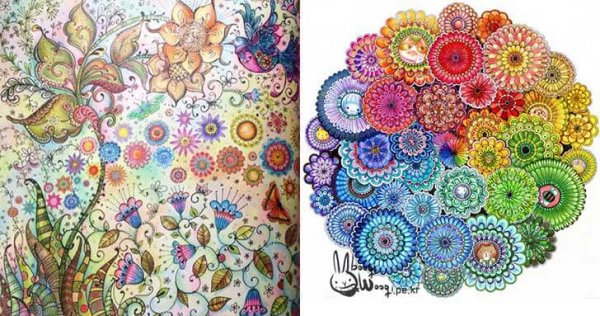Coloring, A Therapeutic Pleasure

Coloring, the simple act of illuminating bare surfaces is an exercise of liberation, allowing us to connect with our inner selves.
It’s quite possible that you associate coloring with your childhood. The smell of pencils and those drawings ready to come to life, are certainly a past that is very fond for all of us. But in recent years the art of coloring has become more than just a task designated exclusively for children.
Coloring is a therapeutic and rehabilitative exercise that can aid in the treatment of a variety of disorders and diseases. Not only that, beyond the clinical setting, adults are rediscovering the enjoyable activity of coloring which has led to a burst in the publication of fantastic coloring books aimed towards adult audiences.
The purpose? They call it the art of anti-stress, but the truth is that it goes far beyond that. Coloring guides our mind to fantasy worlds and we are able to disconnect from our daily problems and enjoy a simple act.
Young authors like Johanna Basford represent a trend today that has a huge impact. Two of her books, The Secret Garden and The Enchanted Forest have captivated millions of adults through its therapeutic and liberating art.

Coloring, a therapy with many clinical benefits
Most people who buy these books just want to enjoy the simple art of drawing and painting, but coloring exercises have also had great importance in the field of cognitive rehabilitation.
People with different types of dementia or neurological diseases, may benefit from this exercise which improves psychomotor coordination, and spatial orientation. It is a simple exercise that induces a state of inner tranquility, helping them develop basic cognitive processes such as concentration on a task, creativity and motivation.
Coloring also creates an inner connection where the mind and background of the external environment stop for a moment, and the person experiences harmonizes feelings through color, relieving anxiety or stress.
Children with different needs and deficiencies can benefit, for example, from the exercise of coloring mandalas, a task already established to have psycho-pedagogical benefits.
Coloring is a silent act that exercises an inner poetry through multiple emotions, and all of a sudden the world seems to match. We can all benefit from this exercise.
Coloring, a simple everyday act of liberation
Those who are faithful followers of this art show it is a task that is as relaxing as it is enjoyable.
The act of opening bare coloring pages, where we are invited to dive into complex fantasy worlds, is already exciting in itself.

Some people choose a marker, others pencils or crayons. The opinion is always unanimous: we are dealing with an art form that manages stress in a very elementary way, by offering all these dimensions:
- In the act of coloring we exercise both hemispheres of the brain. It coordinates imagination with logic, accuracy with inventiveness, and concentration with inner freedom.
- No need to color in order to free ourselves from compulsorily stress, meaning, these books aren’t just for those who lead a life of pressure and anxiety. Absolutely not. Most choose them for their aesthetic beauty, and because coloring, in turn, evokes the artistic and creative side all we have.
- Each person will immerse him or herself into these drawings either out of curiosity or because they feel a passion for art. Whatever it is, the agreement seems to be unanimous regarding the “relaxing” benefits.
- Coloring “cures” many other aspects. It can unlock many inner emotions while it guides us on a walk through color. It forces us to choose certain hues that, somehow, come to show our mood.
Sometimes, when different types of more guided therapy seem to fail, exercises such as coloring allow the person to enjoy a brief moment of independence during their time of loneliness.
As an interesting piece of information, we’ll tell you that Carl Gustav Jung delved into the art of coloring mandalas. According to him, the circular images exert a healing process for the soul, hence its magic.
That’s why the vast majority of books sold today always include fascinating representations that almost never miss a circular form, but they still remain mandalas.
When you draw or color you exercise the mind. What we do first is find information, internalize the drawing itself, and then choose colors based on personal guidance. And as we do it, we meditate, organize our thoughts and release tension…Could there be anything better?
Images courtesy of Johanna Basford
This text is provided for informational purposes only and does not replace consultation with a professional. If in doubt, consult your specialist.








